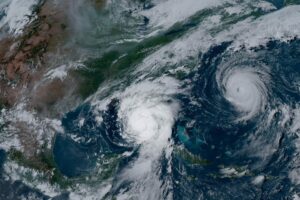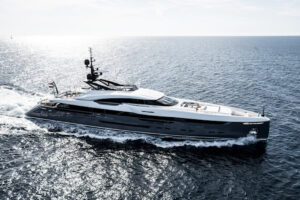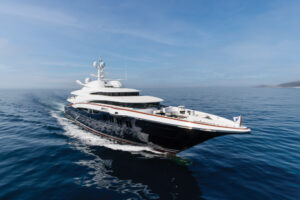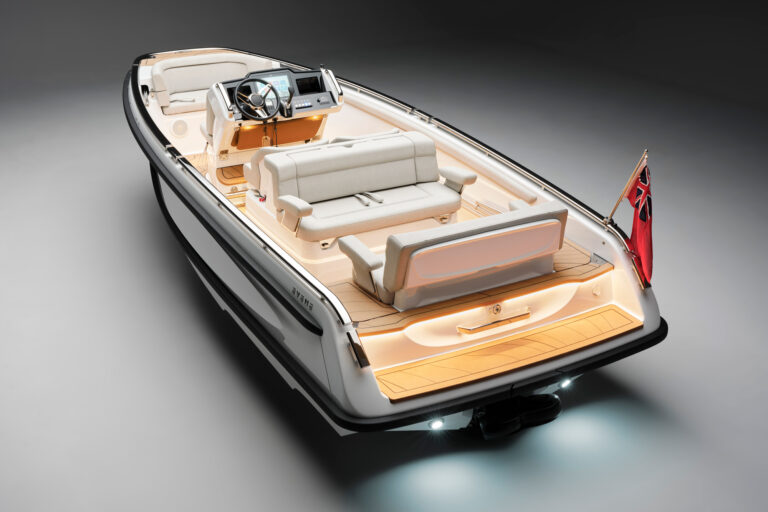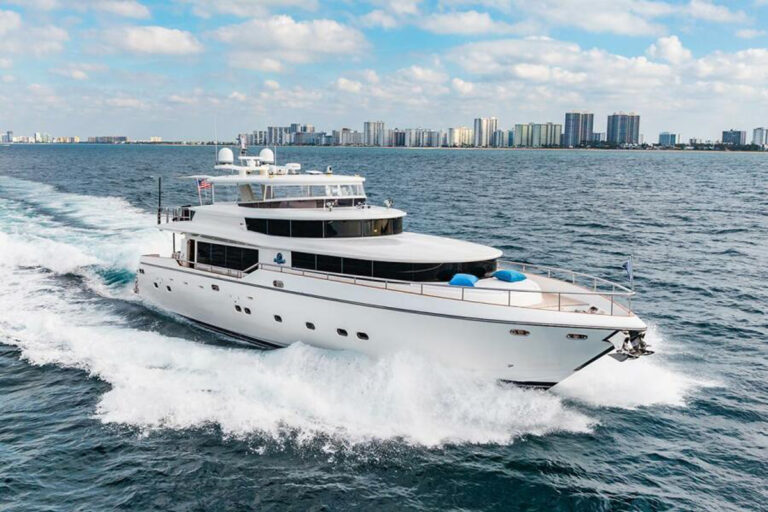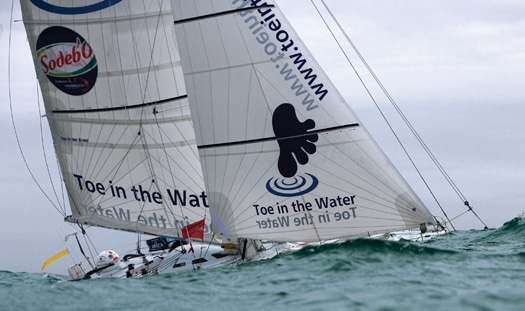
ytgnov17toe525.jpg
Steve White knew the odds when he made the decision to enter the 2008 Vendée Globe: You don’t win the Vendée, so much as survive it. This solo, nonstop, around-theworld race is such an unparalleled test of man and yacht against the sea that simply finishing is a triumph. What he couldn’t have imagined was the challenge he’d face just getting to the starting line.
The Vendée was a boldly ambitious goal for someone who had begun sailing barely a decade earlier. The Englishman had found his calling after a single afternoon spent on a friend’s 17-foot Lysander. That was all the inspiration he needed to buy his first boat-a 21-foot Tucker Ballerina-quit his job restoring classic cars, and hire on at a local boatyard where he put his natural mechanical abilities to good use working on rigging and repairs.
White honed his sailing skills working for the legendary Sir Chay Blyth’s Challenge Business, an operation that gave professional sailors the chance to accumulate vast experience quickly by leading crews of novices and corporate guests on demanding trips. Between 2001 and 2005, White logged over 100,000 miles, including 25 trips around the Irish Sea’s Fastnet Rock, and two transatlantic races.
Even with so much hard sailing under his belt, his decision to tackle the Vendée was audacious. Lacking a high-profile name or an established sponsor, finding funding would be a monumental challenge. But when he made the decision in 2005, he had three years on his side. He planned a schedule of races to prepare and qualify for the Vendée and settled on a roughly $9.5 million budget, the amount he figured he’d need to build and outfit a new boat, fund a support team, and cover expenses.
It was even harder than he thought. As his potential sources fell through, White dropped race after race from his schedule until, finally, he was left with only the Artemis Transat, which he needed to complete in order to qualify for the Vendée. It became obvious that any notion of building a new boat was hopelessly unrealistic. Even acquiring an updated secondhand Open 60 was out of the question. He’d have to make do with a tattered 10-year-old boat and hope that it would hold together over 27,000 miles of brutal seas.
Finally, with only weeks left and no sponsors on the horizon, he revised his budget to a bare-bones $322,000, an impossibly small fraction of what his competitors would be spending. He found a private backer who offered to provide half, if White could find a sponsor for the other half. A week before he had to set sail for the Vendée’s starting line, White met with a possible sponsor, a small energy company, whose chairman agreed in principle to provide the additional $161,000, contingent on finalizing a business deal that was due to be signed the next Thursday. Early Wednesday morning, White loaded up his boat and set sail for the Vendée’s home, the French harbor of Les Sables D’Olonne. On Friday morning, having heard nothing, White called the company. An assistant told him that they wouldn’t be sponsoring him after all.
He called his backer with the news. “I told him, ‘Look, I can’t raise the other half.’ He said, ‘I’ve got an idea, give me an hour or two and I’ll give you a call back.’ So I sat by the phone in the middle of the Bay of Biscay all day on Friday and heard nothing.”
In the meantime, White’s wife, Kim, had borrowed money to make the trip from the English coast into London with the couple’s four children, so that they could get the passports they’d all need to see him off from France. White reached her Friday night on her way home, and told her the situation.
On the train back to Dorset, Kim broke the news to the kids that they would probably lose the house and the boat-both mortgaged to cover expenses leading up to the Vendée. Twenty minutes later, they arrived home to a voicemail from the backer saying he would provide the entire $322,000 as long as White would brand his boat for the charity Toe in the Water (see “The Healing Seas,” opposite).
White was still in the dark. He had no satellite signal and little to hang his hope on. “I sat there on the boat about ready to pull my hair out, and didn’t hear anything over Friday night. Then, early Saturday morning, I got a weak phone signal. I was just able to get three voicemails of Kim and the kids screaming down the phone, ‘We’ve got the money, we’ve got the money.’ I was completely bloody exhausted and just in pieces going up the canal, into Les Sables D’Olonne, knowing that we were going to be able to make the start.”
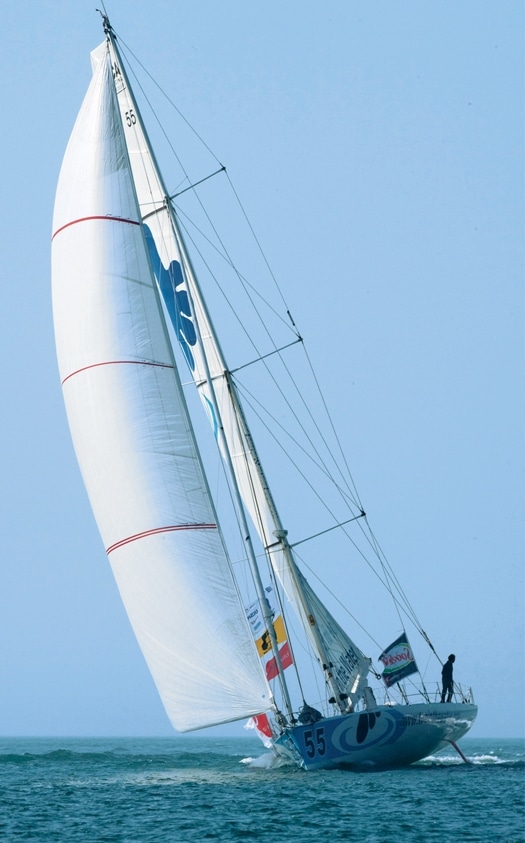
| | |
The relief was short-lived. With a scant three weeks until the official start of the race, White began a mad dash of repairs and refitting that included hauling the boat to sandblast the bottom, and stripping out the electronics that were badly in need of rewiring and updating. As taxing as the frantic 20-hour days were, he would sail over the starting line and into the teeth of far more demanding tests of his ingenuity and his aging boat.
During the first week of the race, nine of the 30 contestants had to drop out because of harsh conditions in the Atlantic. For Steve, the first weeks underway presented some minor challenges but it wasn’t until he was a third of the way around the world that he had his first major crisis. His Code 5, an asymmetrical spinnaker intended for heavy winds, got stuck. The furling line jammed in the top drum, leaving the sail rolled up at the bottom and ballooning at the top. White was stunned. “It’s an absolutely crucial sail to have in the Southern Ocean, but it was shaking the rig violently, shaking the entire boat, and threatening to do a whole load of damage.” Unable to save the sail, and faced with an obvious need for action, he armed himself with a kitchen knife taped to a boat hook and tried to cut it loose. Battered by rolling seas, he struggled for several hours, wet and bruised, until he finally cut it free and watched horrified as it dropped to the deck and immediately washed over the side. “I just cut the whole thing loose and waited for it to untangle, drift off, and sink.” Seeing the $32,000 sail sliding beneath his wake, an exhausted White realized he had just lost a key part of his sail arsenal, but all he could do was let it go and sail on.
He had more success with a damaged gooseneck that could have easily spelled the end of his race. With this crucial connection between boom and mast threatening to crack apart and no spare on the boat, White built a splint of battens to support it, lashing them to the keel head through holes drilled into the deck. The repair not only saw the boat through the second half of the race, but held up through a one-day posting for the fastest 24 hours.
A final technical curse came in the form of a consistently malfunctioning autopilot, a bitter memory for White. “I wasted so much time effectively lying hove-to, trying to sort pilot problems.” The remedy came in the form of a long satellite call, with the manufacturer talking White through resetting the system from scratch. But the accumulated lost time ensured that he was far behind the leaders.
Still, White crossed the finish line on November 9, 2008, logging 109 days on the water and finishing a respectable eighth. Considering that only 11 of the 30 boats that began the race would finish, it was an amazing achievement and a victory in its own right. White’s eyes, however, were already set on the horizon. “A better budget, a newer boat, and we’ll try for the podium in 2012.”

